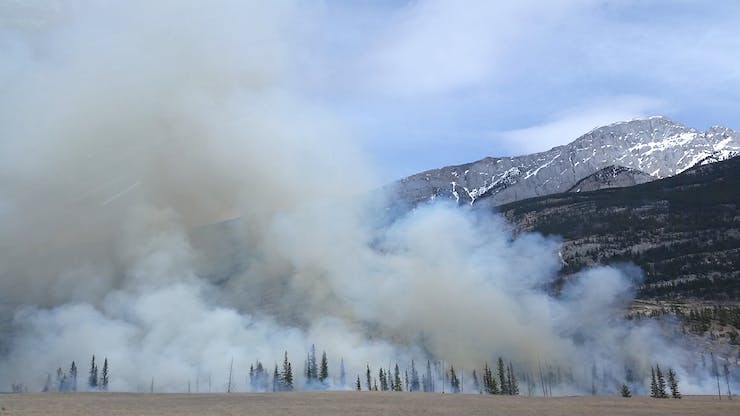
Drones are amazing tools that have many different purposes. They can provide us with an amazing birds eye view of the world with stunning photographs and videos. They can help us get to places that are hard to access. They can make life more efficient by preforming difficult tasks. Drones have been a huge help to emergency officers when faced with dangerous scenarios like fires. Some professional drones are able to withstand high temperatures can be used to help firefighters combat fires by giving them a full view of the fire from a safe distance. But what happens when an unauthorized drone gets involved with a firefighting mission?
Much of our country spends the summer months worrying about the risks of wildfires. They can be unpredictable in how they start and spread. There are many levels of firefighting that goes into the control of wildfires. Resources from both the ground and sky are used to coordinate how fires are tracked and extinguished. Firefighters use helicopters, planes, and drones to assist from above. The helicopters and planes are used to help put out and track the fires. Drones have been paramount in giving firefighters a precise view of what areas of wildfires pose the greatest risk of spreading. The data collected by these drones is used to plan the best ways of stopping the fires.
But as hobbyist drones become more popular they have begun to interfere with efforts of these firefighters. People have been flying drones into areas where there are wildfires perhaps to get some amazing photographs, or maybe just for the thrill of it. When they do this though, they are putting themselves, the public and those working on the fires at an unnecessary risk. There is a reason why the FAA has declared all wildfire zones as a no fly zone for drones at any time.
When a rouge drone enters a fire zone they put a halt to any effective fire prevention strategies. Ryan Myers is a regional risk management officer for the US Forest Service who has had to deal with drones getting in the way of his job. He said, “If you’re flying drones out there we can’t be doing our job. Our number one priority with wild-land fire management is public and firefighter safety so when people are flying drones in airspace where we’re trying to operate with aviation resources it’s not safe, and it’s not safe for the pilots. It’s not safe for the crews, it’s not safe for the ground resources and it has consequences with the public as well.”
Recently this happened in both New Mexico and Alaska during a wildfire. The drones posed a risk to authorized drones trying to gather data, as well as planes and helicopters trying to put out fires. The unauthorized drone could crash into one of the other airborne vehicles, resulting in serious injuries, or more fires. In response, all firefighting procedures have to be stopped, and when trying to get ahead of a fire every second counts. The Utah, Provo Fire Department was on hand to help with the Alaska Fire and released a statement after a drone interfered with operations. It said, “Yesterday all operations had to be shut down for a while on the Alaska Fire because someone flew a drone into the area where firefighters were working. This is dangerous and could cause fatalities as drones interfere with ground and air operations.”
The statement from the Provo Fire Department went on to point out there is an easy solution to these kinds of issues. “If you really need to fly your drone please download the FAA app B4UFLY which will tell you where you can and cannot fly. But also be aware that wildfires are a no drone zone with the FAA at all times.” Yes, a drone could get some amazing photographs of flames raging through a wildfire without posing any risk to the photographer, but it isn’t worth it. Firefighters face enough risks just by showing up to work everyday, they don’t need any added issues from unwanted drones.
|